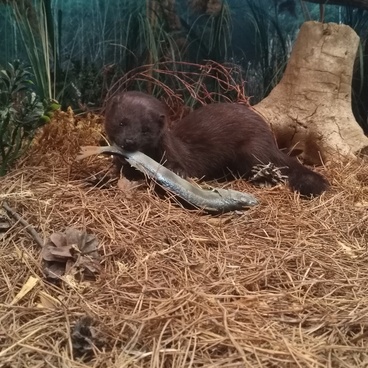Morda is one of the most widely used fish traps. This fishing gear has been known since ancient times and is still used in some locations. Different ethnic groups had different names for this fishing tackle: morda, venter, nersha, norot or mordushka.
The classic morda is a large cone woven from twigs with another, smaller one, inside. At both ends, it has funnel-shaped mouths to guide fish into the trap. Its size depends on the amount of the catch that the fisherman is going for. It can be small or rather large.
Some of these portable traps were up to 4 meters long, with side flaps reaching 8 meters. When the trap is installed, the side flaps cut the passage in the water from top to bottom. With sufficient fish in the water body and the right choice of a point to set the trap, one can always count on a good catch.
This type of fishing gear could be made of any appropriate material, such as willow twigs, bird cherry twigs, sack cloth or some other open-mesh fabric. Traps made of fabric or mesh are still used to date. They have an important advantage: This gear can be made transformable and it takes little space in storage or transportation. A morda made of tree twigs or branches is not quite convenient but durable. Traps of this kind usually stayed in the water for a long time, with the fisherman coming once in a while to pick up the catch and put the trap back.
A morda is used for fishing near the shore. Before lowering the trap into the water, fir tree branches are inserted into the base of the inner cone. Some load (a rock or a brick) is attached to the base and the top part of a morda, the important thing being to keep it under the water. The opening in the top cone is closed up with hay. Then the trap is tied with a rope to a shrub or a pole planted into the bottom and is lowered into the water with a load pointing down. The base faces that part of the water body where fish is supposed to come from. It is lured by the fir tree branches attached to the inner cone and it gets inside through its opening.
The classic morda is a large cone woven from twigs with another, smaller one, inside. At both ends, it has funnel-shaped mouths to guide fish into the trap. Its size depends on the amount of the catch that the fisherman is going for. It can be small or rather large.
Some of these portable traps were up to 4 meters long, with side flaps reaching 8 meters. When the trap is installed, the side flaps cut the passage in the water from top to bottom. With sufficient fish in the water body and the right choice of a point to set the trap, one can always count on a good catch.
This type of fishing gear could be made of any appropriate material, such as willow twigs, bird cherry twigs, sack cloth or some other open-mesh fabric. Traps made of fabric or mesh are still used to date. They have an important advantage: This gear can be made transformable and it takes little space in storage or transportation. A morda made of tree twigs or branches is not quite convenient but durable. Traps of this kind usually stayed in the water for a long time, with the fisherman coming once in a while to pick up the catch and put the trap back.
A morda is used for fishing near the shore. Before lowering the trap into the water, fir tree branches are inserted into the base of the inner cone. Some load (a rock or a brick) is attached to the base and the top part of a morda, the important thing being to keep it under the water. The opening in the top cone is closed up with hay. Then the trap is tied with a rope to a shrub or a pole planted into the bottom and is lowered into the water with a load pointing down. The base faces that part of the water body where fish is supposed to come from. It is lured by the fir tree branches attached to the inner cone and it gets inside through its opening.

